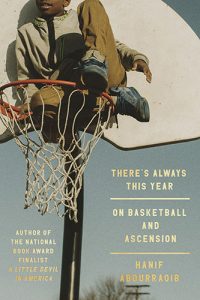Prairie Schooner – Summer 2012
Volume 86 Number 2
Summer 2012
Quarterly
Shannon Smith
Although not the leading story in the Summer 2012 issue of Prairie Schooner, Justin Taylor’s “Flings,” is the one that seems the most summery, as it takes place in that in-between time of adjusting to life after graduation, soon after a group of friends leave a “semi-elite liberal arts college” in Ohio. The story follows each of the friends individually, as they make their ways to Portland, Oregon, bumbling through the friendships crossed with the romantic entanglements that define post-collegiate life. Many of the characters are vaguely artsy, with Andy working on an epic novel, and two of the female characters having internships in an experimental film festival, before “rapidly learning the extent to which they had overestimated their interest in experimental film.” Taylor’s writing excellently explores the confusion of this period of life, when one is trying to define one’s self in the world, as well as the narcissism that can come with a headlong pursuit of the arts. He understands the messy, crisscrossed relationships of a tight-knit group of friends right out of college. His writing is tinged with a sense of humor about the overly sincere and serious.
Although not the leading story in the Summer 2012 issue of Prairie Schooner, Justin Taylor’s “Flings,” is the one that seems the most summery, as it takes place in that in-between time of adjusting to life after graduation, soon after a group of friends leave a “semi-elite liberal arts college” in Ohio. The story follows each of the friends individually, as they make their ways to Portland, Oregon, bumbling through the friendships crossed with the romantic entanglements that define post-collegiate life. Many of the characters are vaguely artsy, with Andy working on an epic novel, and two of the female characters having internships in an experimental film festival, before “rapidly learning the extent to which they had overestimated their interest in experimental film.” Taylor’s writing excellently explores the confusion of this period of life, when one is trying to define one’s self in the world, as well as the narcissism that can come with a headlong pursuit of the arts. He understands the messy, crisscrossed relationships of a tight-knit group of friends right out of college. His writing is tinged with a sense of humor about the overly sincere and serious.
Also about confusion, and bearing a fantastic title, is Garth Risk Hallberg’s “That High, Lonesome Sound.” The story centers on Terry, a past-his-prime pothead college professor who is worried about his estranged son, Ben, who is on a tour of duty in Iraq. While Terry is worrying about Ben, Ben’s girlfriend, who Terry has met only once—disastrously—finds Terry and tells him that Ben has actually been home a week. She invites him to their wedding, because Ben won’t, and Terry, never one to avoid causing trouble, goes, dragging along his step-daughter who plays in a “post-riot-grrrl thing” called Napalm Pig. Hallberg’s dark sense of humor reaches its pinnacle as Terry and his daughter attempt an awful live rendition of a song that is supposed to be an apology to Ben. Hallberg memorably and skillfully depicts a family in turmoil.
Although not united by any particular theme, this issue of Prairie Schooner contains a number of other stories that revolve around different types of confusion. Melissa Yancey’s “Firstborn” is a tender, depressing story about an aunt who is running out of money, but wants to take her niece to Paris. By her own admission, the aunt has always been a mistress, never marrying and never having children of her own. She is now cycling into alcoholism and looking for an escape. The arrival of her niece seems to bring a chance, but the story has other plans.
Gerald Shapiro’s “Last of the Cowboy Poets” follows a former radio announcer who exaggerates his familiarity with writing poetry in order to obtain one of the few remaining radio jobs. The story plays on perceptions of the American West, poetry, and family obligations.
Nancy Welch’s “Free Country” shows how a burgeoning friendship between two fourteen year old girls, one of whose fathers is a strict Methodist, and the other who might be considered by that father to be from the wrong side of the tracks, can go horribly wrong, in unexpected ways. Welch masterfully explores the experience of being an impressionable young girl in a new town who wants to make friends.
In the essay, “The Nothing That Is,” Scott Nadelson provides an interesting take on why and how he became a writer, setting up a contrast with an English graduate student who taught him in college.
The inclusions in this issue of Prairie Schooner are diverse, but the fiction, especially, is quite strong. Many of the stories boldly walk the sensitive line of how to present a story with a sense of humor about an awful situation. Prairie Schooner contains a number of stories that deftly illustrate the messiness of humans trying to live their daily lives.
[prairieschooner.unl.edu]




